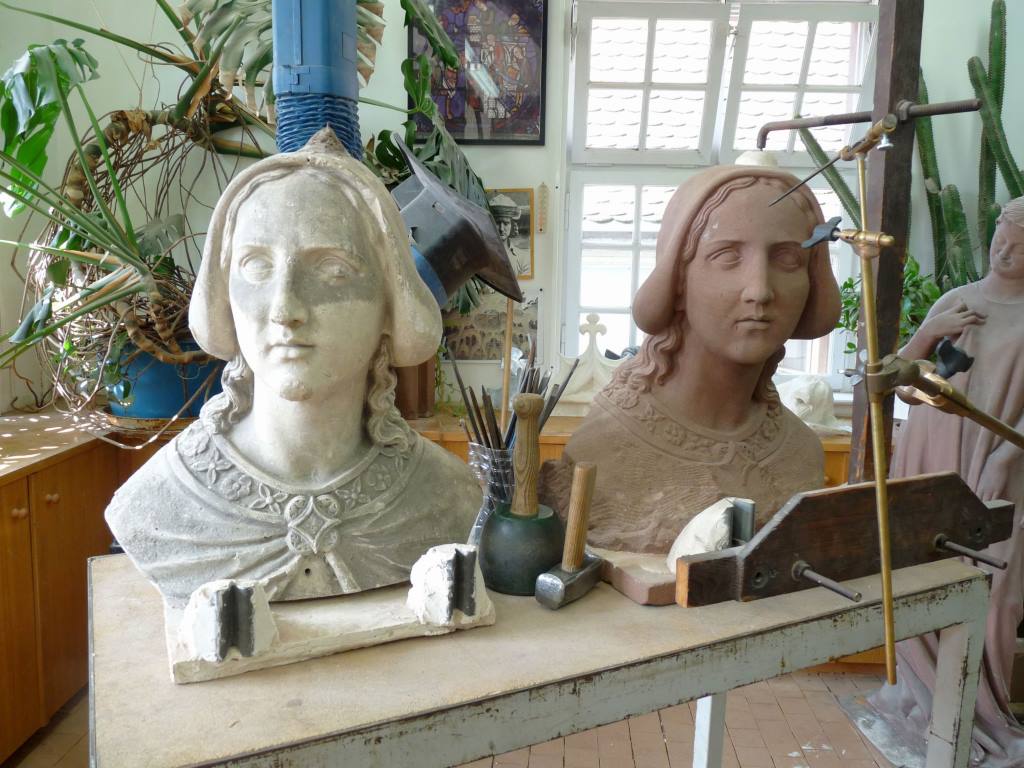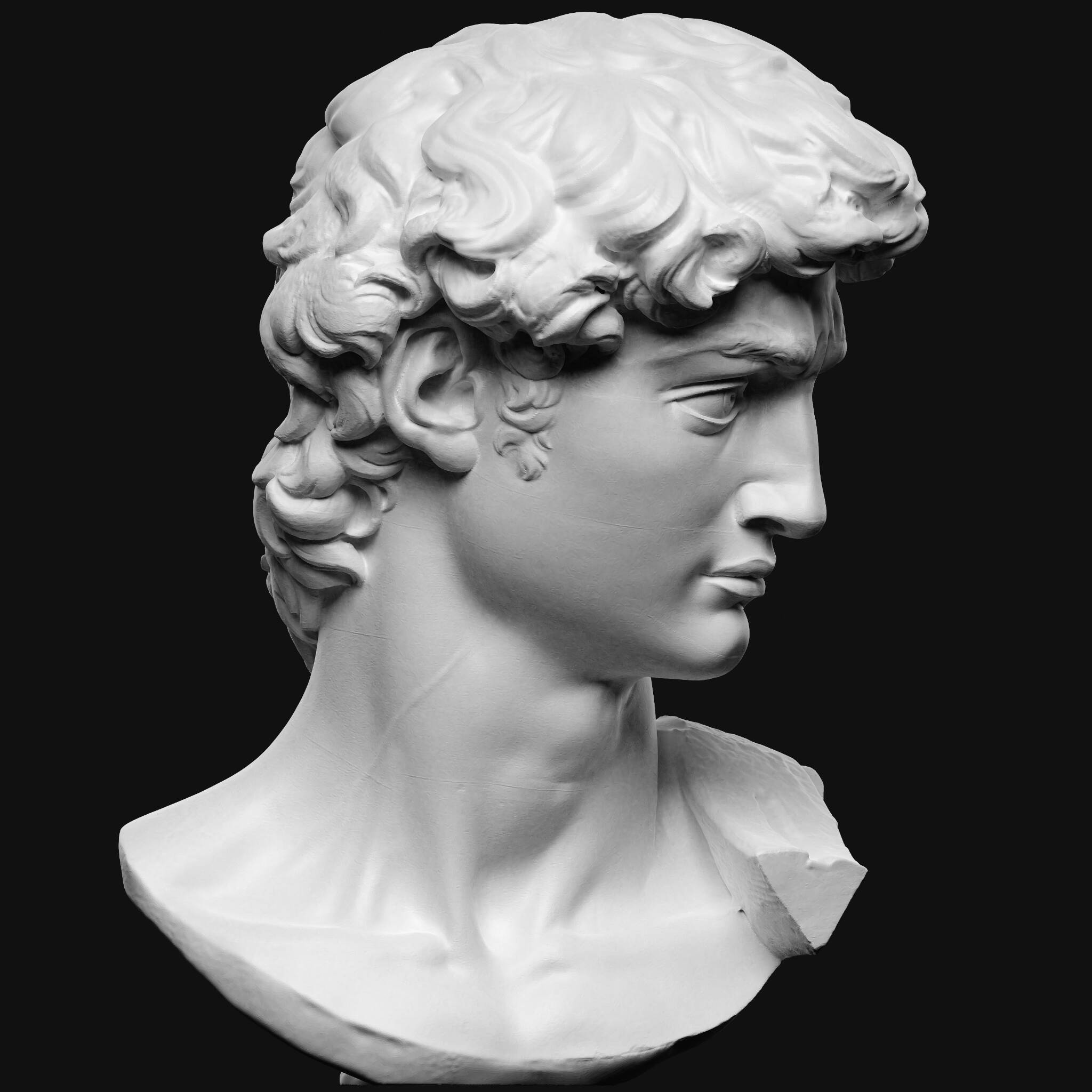Michelangelo crafted this masterpiece from 1501 to 1504 in white marble, standing at an impressive 5.17 meters. Since its move to the Galleria dell'Accademia, Florence, numerous notable replicas have emerged worldwide, serving various purposes and made from different materials. Personally, I own a replica of David’s nose for sculpting study.
Creating an exact replica demands both artistic prowess and technical expertise. Bronze copies can use the mold of the original, while reproducing marble sculptures requires meticulous hand sculpting. Artists in the eighteenth century employed a "pointing machine" (Italian: macchinetta di punta) for precise replication, which is still in use today.
Copying a plaster cast of a bust in red sandstone. Workshop of the Strasbourg cathedral
Ji-Elle, CC BY-SA 3.0, via Wikimedia Commons
High-quality replicas of masterpieces crafted by skilled artists hold significant value. In the 18th century, European royal houses esteemed these replicas, often including them in their collections. The Clock of David utilized a 3D scanning technique from the collection of Frederick V, the King of Denmark and Norway, now a part of The Royal Cast Collection at SMK, the National Gallery of Denmark.
Head from statue of David
SMK Open
However, not all replicas showcase the same level of skill. A quick online search reveals numerous replicas for sale as art décor that may not capture the essence of the original, often looking peculiar.